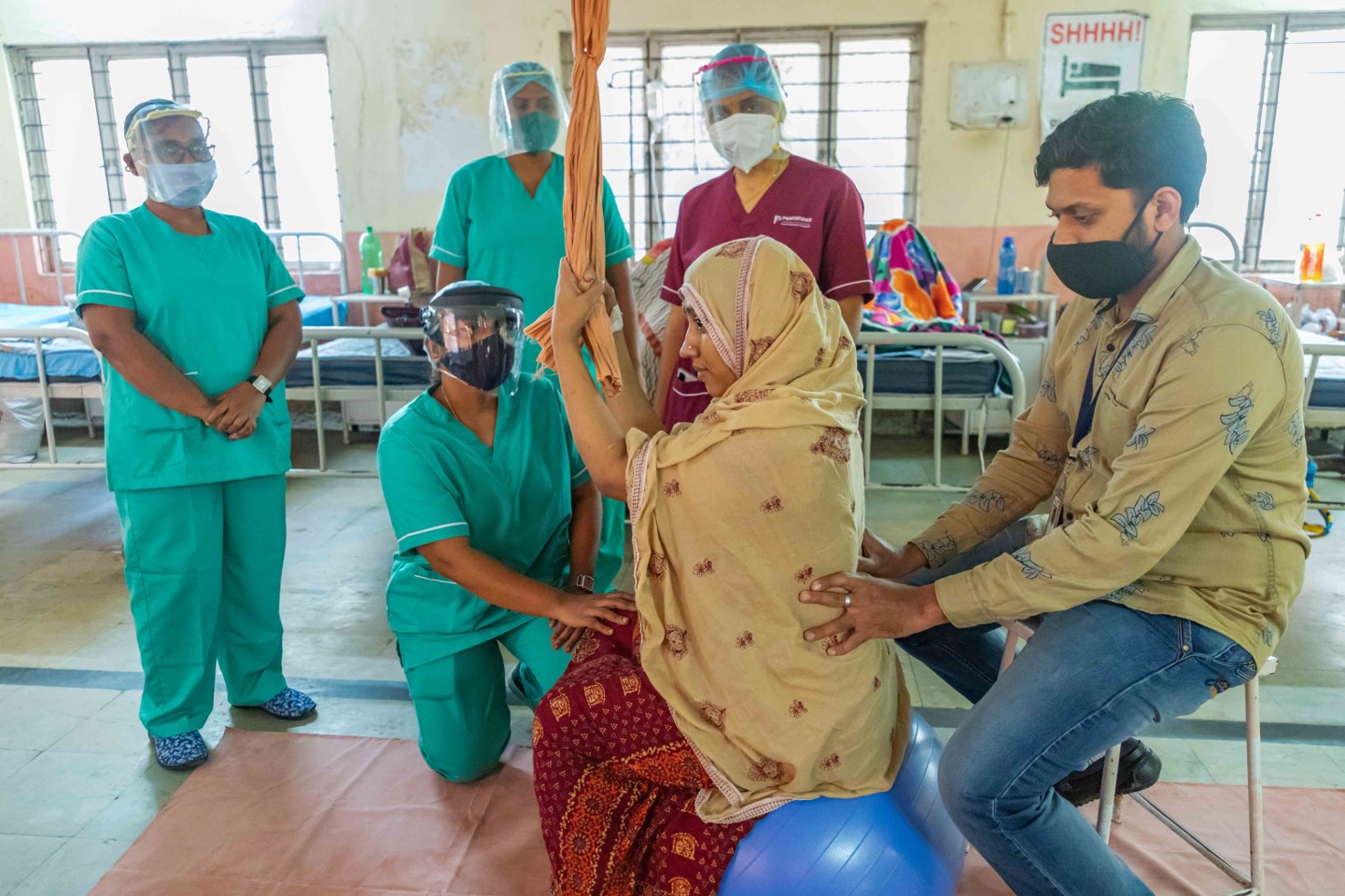Evita Fernandez
Chairperson, Fernandez Foundation
Fellow project website: www.fernandez.foundation
Dr. Evita Fernandez has changed childbirth in India. She integrates trained midwives into India’s public hospital system where they attend 87% of normal births, providing safe, fuller, far warmer care for women and babies. This also frees the doctors to focus on the most difficult cases.
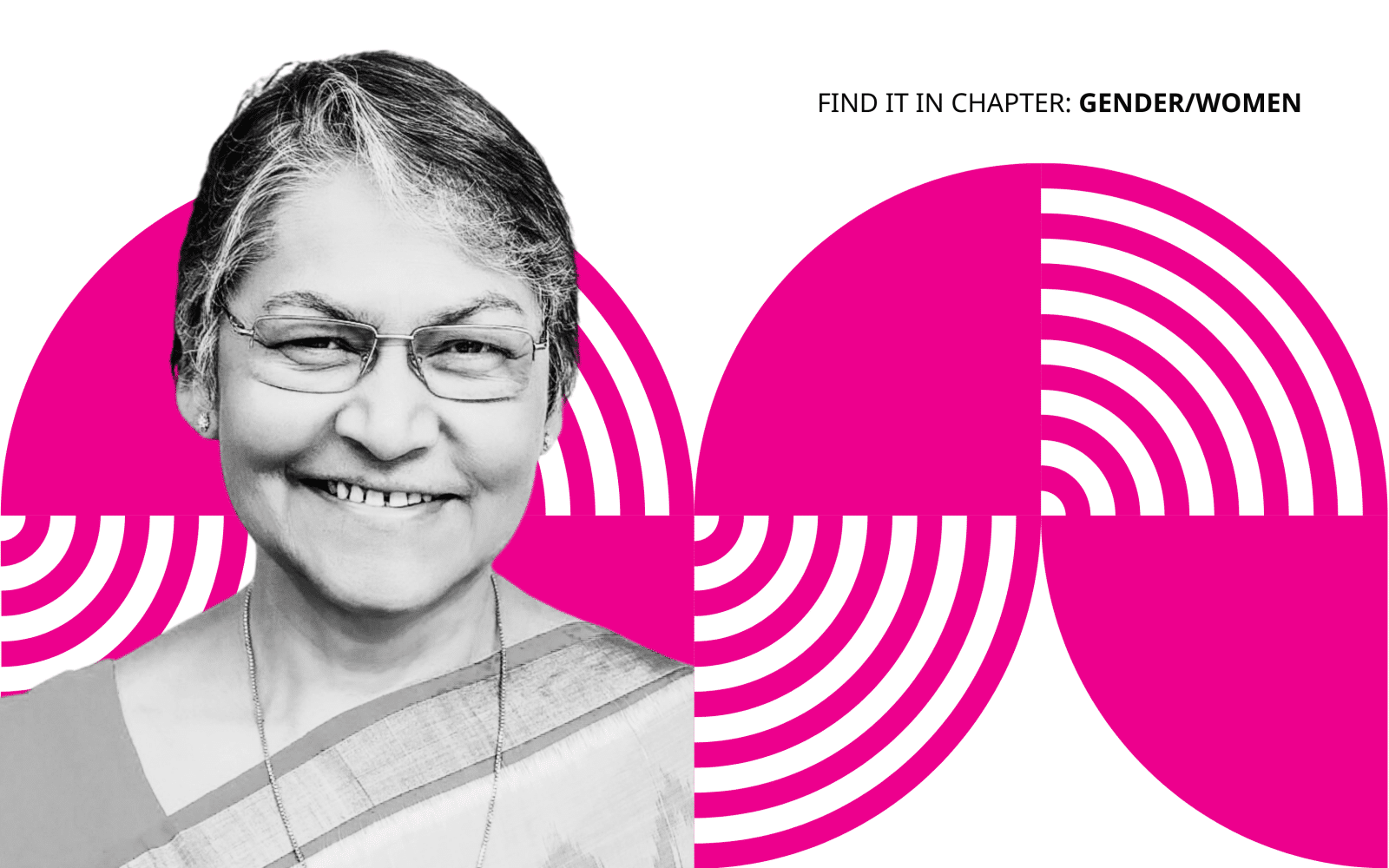
THE NEW IDEA
Through her National Midwifery Training Institute Evita is developing highly skilled cadres of professional midwives and midwifery educators and placing them in public hospitals, where they handle 87% of normal deliveries, enabling doctors to focus on births that require medical or surgical intervention. This collaborative model of care is reducing India’s high reliance on medicalized birth and C-sections, in a country with one of the highest rates of infant mortality in the world.
Evita’s efforts and international recognition have also borne fruit at the highest policy levels. In 2018, the Indian government recognized midwifery as a vital profession, and the following year partnered with Evita’s organization to train high-level midwife educators across five states and growing. By 2032, the government seeks to train 90,000 new midwives. The Fernandez School of Nursing, the recognized National Midwifery Training Institute led by Evita, is the only charitable and private player tapped to meet this target.
THE PROBLEM
Indian women account for 15% of maternal deaths worldwide, and three women die each hour in India due to complications during childbirth. Each year, 2.7 million Indian babies are delivered stillborn - one for every ten pregnancies. These losses can be traced to a lack of trained health workers and the over-medicalization of the birth process in India, where C-sections, as one example, are used at nearly twice the rate set by the World Health Organization.
Additionally, many women report degrading or abusive experiences in over-full maternity wards, as overworked staff are often instructed to “clear the labor rooms” and turn to unnecessary medical interventions to speed the birth process. In the last two decades, 1.3 million Indian women have died from maternity-related causes. The poorer states, especially their rural and tribal regions, account for over 60% of these deaths. The World Health Organization notes most of these deaths are preventable.
Government incentives draw 80% of pregnant women, most living below the poverty line, into government hospitals for prenatal care and delivery. In some states this has increased the number of women giving birth in public hospitals by 40%. There is an acute shortage of skilled staff to meet this volume -- in some regions, hospitals report fewer than one doctor per 10,000 people.
"India has a high maternal mortality rate, poor doctor-to-patient ratio, rising C-section rates, absence of last-mile access to quality maternal healthcare. In this context, Dr. Fernandez, a veteran in maternal healthcare, believes that midwifery is a workable solution to these widespread problems.”
-Indian School of Business
This overburdened health system is doctor-centric, rather than women-centric. For example, women are asked to lie flat on their backs during delivery - against scientific evidence - to make birth easier for the obstetrician. Doctors don’t request consent before performing physical exams, which are often done hurriedly and painfully. The intense pressures on the health system have pushed India’s maternity practices toward a strongly medicalized approach, leading to multiple unnecessary interventions, including the high C-section rate of 21.5% for deliveries in institutions. At private hospitals the rate is even higher – approaching half the births.
The excessive patient load often results in poor quality of care, manifesting in negligence or obstetric violence. Physical and verbal abuse and shaming of pregnant mothers by medical staff is common. This trauma often drives pregnant women to exploitive private healthcare providers, where they end up with unnecessary C-sections and excessive debt. Women, especially from resource-poor communities, are not afforded the mental and physical care, compassion, and dignity due to them during the birthing process. These factors make India one of the top five countries with the highest maternal death rates. For every 100,000 live births, 103 Indian women lose their lives -- a rate almost 50% higher than what the Sustainable Development Goals call for.
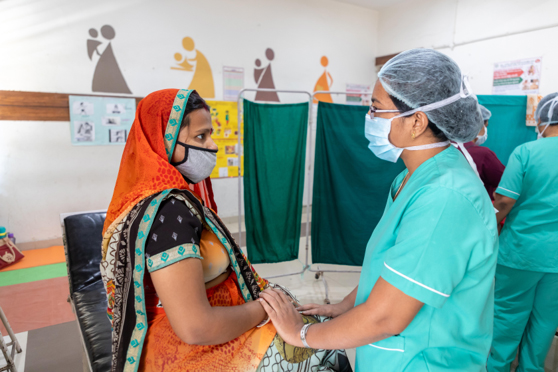
Photo Credit: Evita Fernandez
THE STRATEGY
As a senior obstetrician with three decades of experience, Dr. Fernandez is taking on these public health challenges by developing India’s professional field of midwifery and integrating it into India’s government health systems.
Midwifery is a globally recognized practice that offers a skilled, compassionate, safe, and empowering route to childbirth and newborn care. Recognizing that birth is a normal, not a medical event, midwifery is grounded in a deep appreciation of a woman’s physical and psychological experiences during pregnancy and childbirth. The practice respects a woman’s choices and ability to lead the birthing process.
In 2011, Evita’s quest to make the healthcare system woman-centric led her to design and establish a model midwifery practice in two charity hospitals. She began by establishing rigorous 18-month training programs for midwives and midwife educators. Compared to the few weeks of training in maternal health and birthing Indian nurses receive in a typical program, this comprehensive education makes her midwives confident, true experts in the field.
Starting with eight inspired nurses in 2011, Evita grew the team to 28 midwives. Together, they demonstrated compelling impact, which attracted the attention of global medical experts and government health leaders. In 2016, Evita partnered with the state government of Telangana and UNICEF to introduce midwifery into Telangana’s public hospitals, establishing midwife-led units or MLUs in public facilities across the state. Today, these MLUs are supporting obstetricians by independently addressing healthy pregnancies, dramatically reducing physician case overloads. They are also driving a sea change in the prenatal care provided by public hospitals across 12 districts in Telangana.
Between 2011 and 2022, the midwives trained at Fernandez’ hospitals delivered 42% of the babies born vaginally. Under their guidance the use of episiotomies dropped from 40 to 27% and the use of epidurals from 70 to 40%. In the city of Karimnagar alone, the use of C-sections reportedly dropped by ten percent in just six months.
"At a time when Caesarean section (C-section) childbirths are on the rise, the State government in partnership with the Fernandez Foundation and UNICEF is propagating the idea of midwifery."
-Telangana Today
Public hospitals have been the main site of Evita’s work, as they account for 80% of deliveries across India, and are accessed by women from resource-poor communities who often lack adequate information. By listening to these women and paying attention to detail, midwives can better categorize low and high-risk pregnancies, reduce waiting time, optimize obstetricians’ time, and improve the case-history taking process. Midwives have instituted childbirth classes on hospital premises and have fought for seemingly simple things, like more chairs for pregnant women, who often must stand in long lines in government hospitals. Community health workers have started to sit in the antenatal classes run by midwives, further expanding the flow of key information to mothers and their families. They also become evangelists for midwife-led care in local and rural communities.
Obstetricians and nurses have noticed the transformation across hospitals where Fernandez’ trained midwives work. In assessment visits to 49 public facilities in Telegana made by Fernandez’ supervisors and international educators, obstetricians debriefed in focus groups widely reported that midwives reduced their workload, allowed them to focus on complicated pregnancies, and were an excellent workforce well integrated in their teams. They noted that women were more confident about natural birth, happier, and reported less pain during birthing. In several public hospitals, midwives were actively sought out by women coming in for the first time.
Evita has been mindful to enlist obstetricians as critical allies, advocating with them despite their doubts and resistance to a midwife-led system. Evidence gathered in the pilot programs has led to wide buy-in from the community of physicians. As a result, India’s guidelines on midwifery services were created in partnership with the country’s leading obstetricians. The national governing board for obstetricians and gynecologists commended Evita’s achievements.
Across Telangana and the states of Andhra Pradesh and Odisha, Evita has now built a cohort of 322 midwives and 22 midwife educators. Her trained educators are now building nationwide momentum. A group of three educators can train cohorts of 30 peers.
"A distinctive feature of her approach which reflects her genuine concern towards her patients, is that Dr. Evita believes in allowing women to make choices about issues concerning birth. It is her firm conviction that women should have a voice in the process of delivering a child and should make an informed choice.”
-London Buisness School
For Evita, midwifery is also creating a new and empowered career pathway for nurses. Over time, the midwives experience financial and professional growth -- earning 50-60% higher salaries, moving into senior roles in the hospital system and building recognition for themselves and the field.
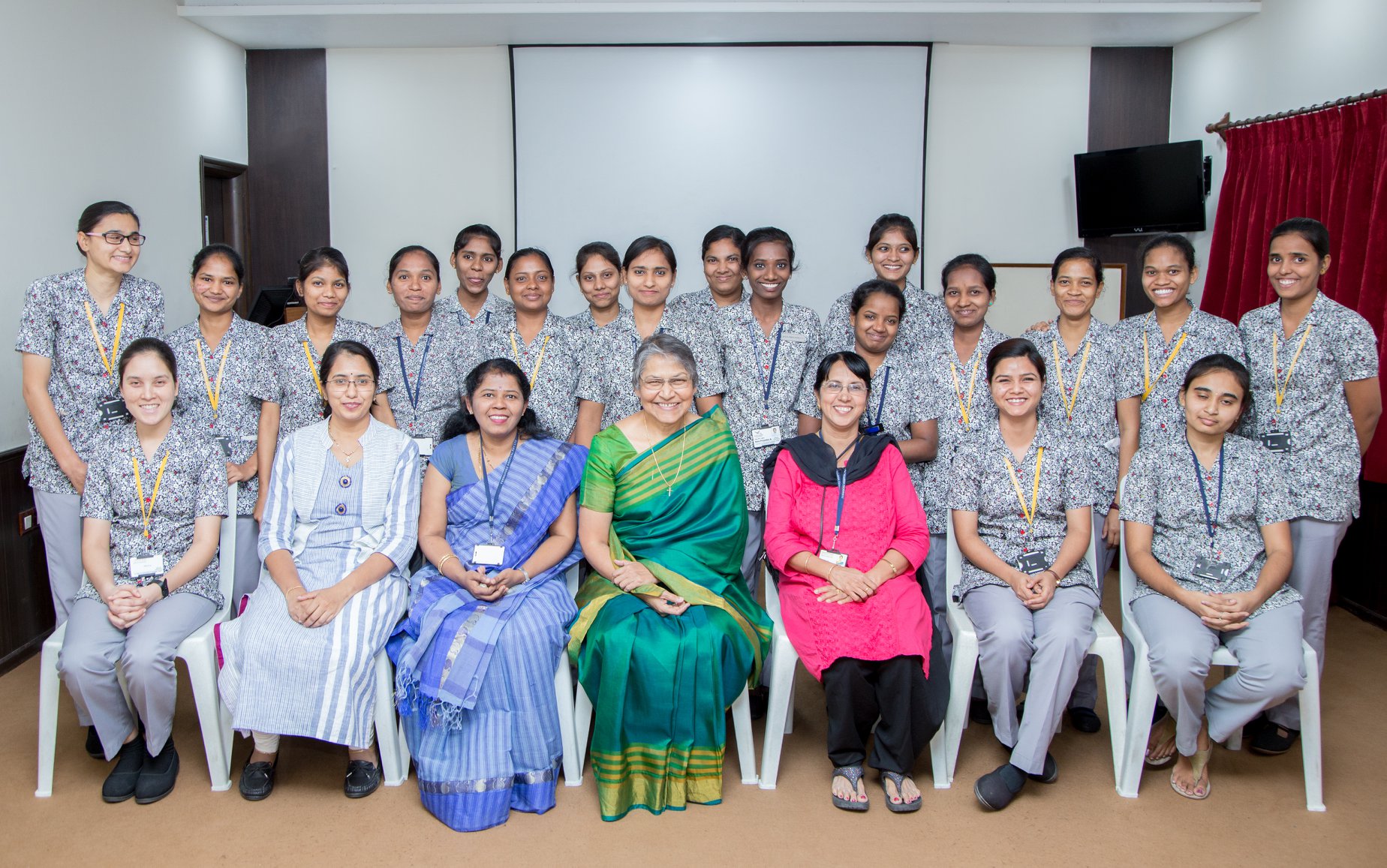
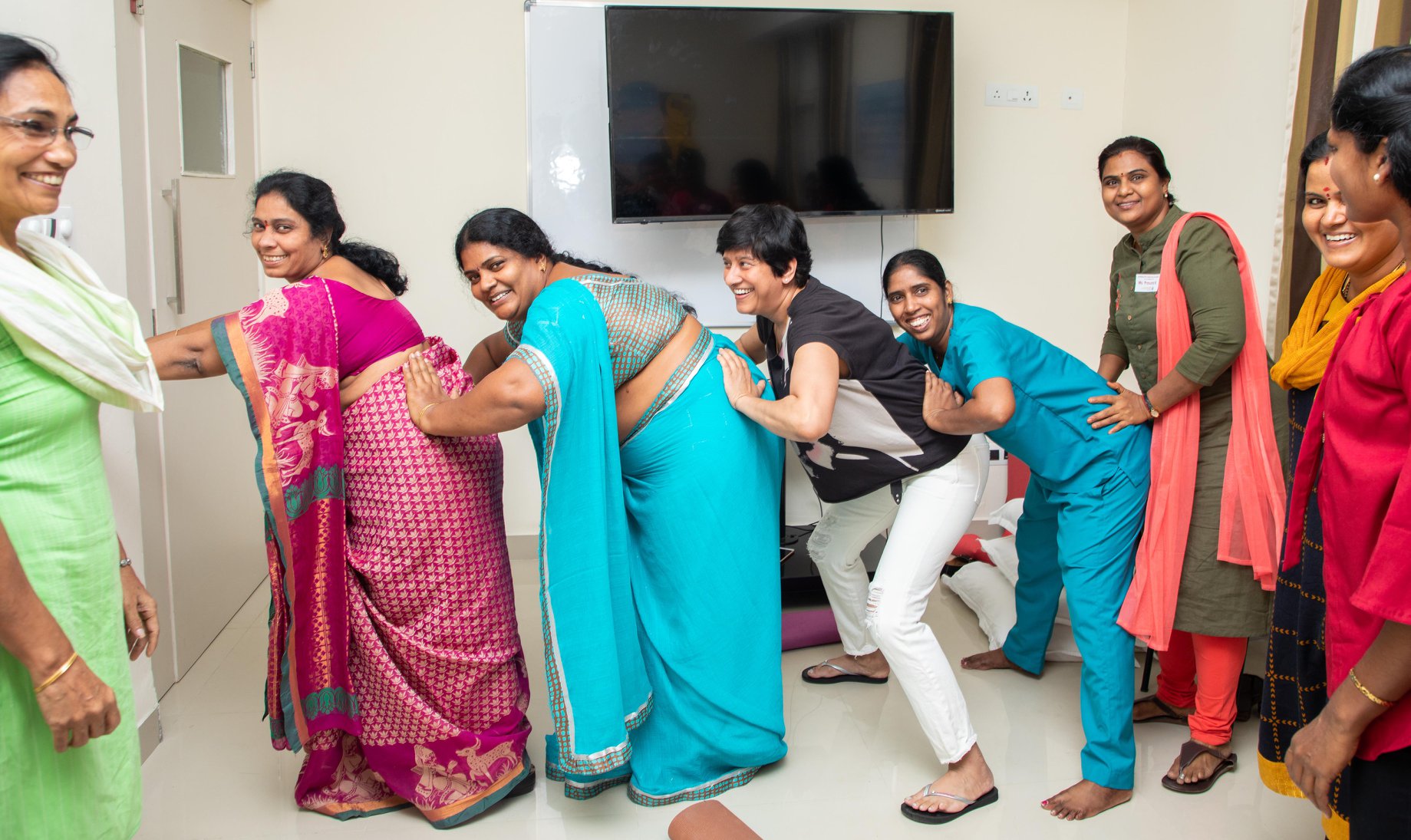
India’s ambitious goal to train 90,000 midwives by 2032 is supported by fourteen National Midwifery Training Institutes (NMTIs) set up to fulfill this mandate. Fernandez’ hospitals are a critical resource in this exercise, providing support to upcoming NMTIs, and creating a research hub to aggregate the experiences and needs of NMTIs across India and its neighboring countries.
As they institute robust quality standards and protocols for de-medicalizing pregnancy, midwives are also training and expanding their own peer networks. Importantly, it is the midwives themselves who are representing the profession at international conferences and government meetings to make a case for its expansion. Across government hospitals they are making a strong case for their profession by demonstrating its benefits, transforming overworked public hospitals into spaces of dignity, joy, and care.
“Fernandez has been immensely successful, but she doesn’t just run the hospitals for profit. Her ethical foundation is also an inheritance from her parents. At her hospitals,… Fernandez has been known for making her patients feel special and safe. She strongly believes in the need to make good quality healthcare accessible to all. Fernandez’s rare brand of medical care goes beyond good quality treatment. It is ultimately defined by empathy for her patients.
THE PERSON
Evita credits her work in the early 1980s at the National Health Service in the UK for her outlook as a young doctor. There she saw midwives in charge of labor wards, working as equals with obstetricians to provide a dignified, respectful birthing experience for mothers. This inspired her desire to create a more democratic, patient-centered experience at home in India, where Evita’s parents had built and then run a small, well-regarded hospital in Hyderabad since the late 1940s.
Shortly after Evita returned from England, her older brother died unexpectedly, and the hospital became her responsibility. She was determined to expand the busy facility, and in 1992, took out a very large loan for a new building. When funds ran low, she sold her own ancestral jewelry to pay for the cement used in the building’s construction.
In her early years as an obstetrician, she also saw how HIV-positive mothers were abandoned, due to pervasive fear within the medical community. Evita worked hard to sensitize her team, to offer these mothers a safe and respectful environment. Fernandez became the first hospital in India to treat HIV-positive mothers, all for free, and to provide their babies with free vaccinations for up to a year and a half.
Evita traces her strong desire to serve her community to a conversation with a Jesuit priest she met on a train while returning from the UK. He advised her to travel to find her purpose and spirit of service. In the years that followed she constantly asked herself, “whether we are in this for business or service?” She later formalized this idea as a guiding principle for the whole organization. In 2018, she decided to register Fernandez Foundation as a not-for-profit – an unheard-of choice for a highly profitable hospital. The foundation now runs six non-profit health facilities with 320 beds, including a Child Development Center.
In her mission to champion midwifery, Evita traces her inspiration to two sources. One was “Pregnancy: The Complete Childbirth Book,” by Nutan Pandit, which introduced the idea of treating pregnancy as a normal, physiological process that deserved dignified and respectful care. Reading it led Evita to transform practices at her family’s hospital facilities. Second, in the mid-2000s, when Fernandez Hospitals became a referral center for complicated pregnancies, she encountered several cases in which young mothers arrived at the last minute with multiple organ failures. Seeing so many maternal deaths shook her deeply.
Aware of the success of midwifery at reducing maternal deaths Evita was convinced it was the solution to India’s maternal healthcare crises. She followed up relentlessly with international experts, and despite opposition from the Indian medical fraternity, persisted and brought on board a range of international midwives, obstetricians, and bureaucrats, all of whom, convinced by her vision, lent their institutional backing. She is also known for several pioneering initiatives, including “Kangaroo Mother Care,” to improve breastfeeding and reduce neo-natal care costs, as well as establishing milk banks, screening newborns and more.
In the face of the rapid global privatization of healthcare, Evita’s vision is a radical rethinking of the potential of public healthcare. Through her decades of work, she has demonstrated that high-quality services can be provided at low cost, reaching people across the socio-economic spectrum. Her success integrating midwifery into public health systems shows that equitable access to healthcare is possible for all, with utmost dignity and compassion.
